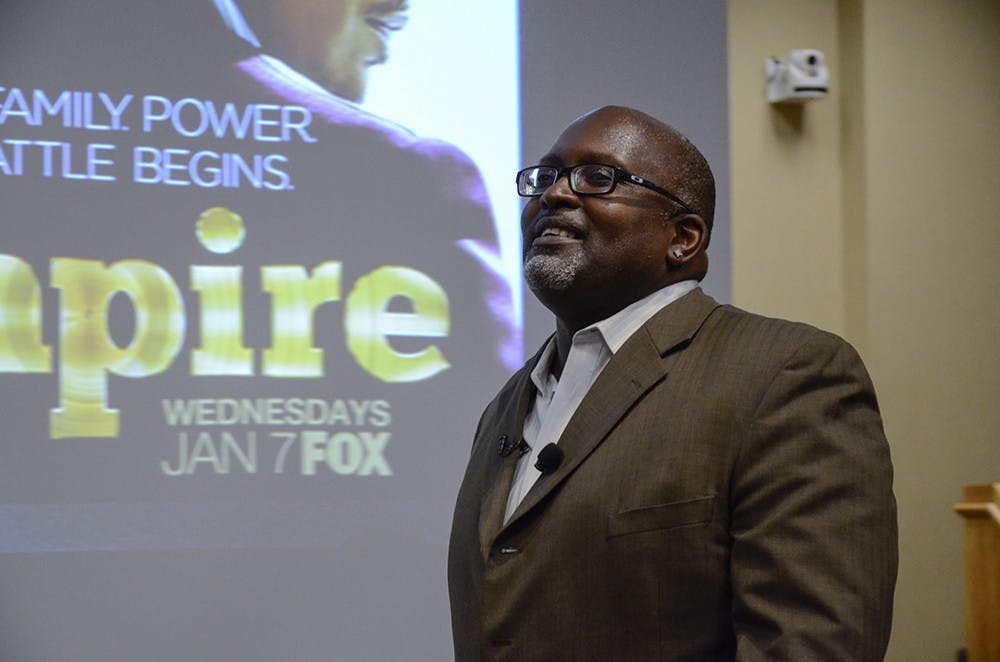Deggans, NPR’s first full-time TV critic, visited campus to speak about the ways media outlets use prejudice, stereotypes and racism to generate audiences and profits.
Deggans was the last of the IU Media School’s Speaker Lecture Series for spring 2015.
“This is a conversation, tough as it is to talk about this stuff, talk about it we must,” Deggans said.
The lecture started with an interactive discussion explaining how media messages hinge on values. Deggans presented two different pictures, and audience members were encouraged to identify the people as good or bad.
An unattractive male in all black was identified as bad, and a handsome male dressed in all white was identified as good.
Deggans wanted to show the stereotypical images in peoples’ heads are real, but that they do not match reality.
A clip from the reality show “Big Brother” was screened to display a term Deggans coined himself, “bigotry denial syndrome.” BDS is a form of unrecognized racism, Deggans said.
“Prejudice is seductive,” Deggans said. “It is easy to use against others.”
Racism was then broken down into three different types to show how the media may or may not display racism.
Deggans said situational racism is using prejudice and stereotypes against selected people of color, often those you do not like. Some feel they know one person of color and therefore know all ?people of color.
Strategic racism is the use of stereotypes about marginalized groups used to achieve political gain. Deggans referenced data collected by the Department of Justice in Ferguson, Mo., stating that even though African Americans make up 67 percent of the population, they represent 93 percent of arrests. In addition, African Americans are 25 percent less likely to have contraband if searched.
The last type of racism discussed was the decoding of white privilege. Social benefits extended to white people with the exclusion of other races are side effects of ?being the generic in everyday life and the objective standard of beauty, Deggans said.
“People of color judge racial progress by looking to future goals,” Deggans said. “White people judge racial progress by comparison to the past.”
Old media, Deggans said, would gather together big audiences in order to sell access to advertisers. This has shifted over time, and networks now must target “large slivers” of this audience and super-serve them to keep that particular niche.
“The same tactics used to mobilize political parties are now used to galvanize media audiences,” ?Deggans said.
The tactics Deggans addressed were fear, anger and hate mongering. He said he believes this divides people unnecessarily, that people are not diversifying their opinions and news niches can reinforce the stereotypes that diversity would amend.
Every news outlet has certain goals and certain audiences, Deggans said. They want to be impactful to their audience and relevant, and they have awards on the line as well.
“You decide how you consume your news,” Deggans said. “Try a range of outlets to break the ?prejudice.”






